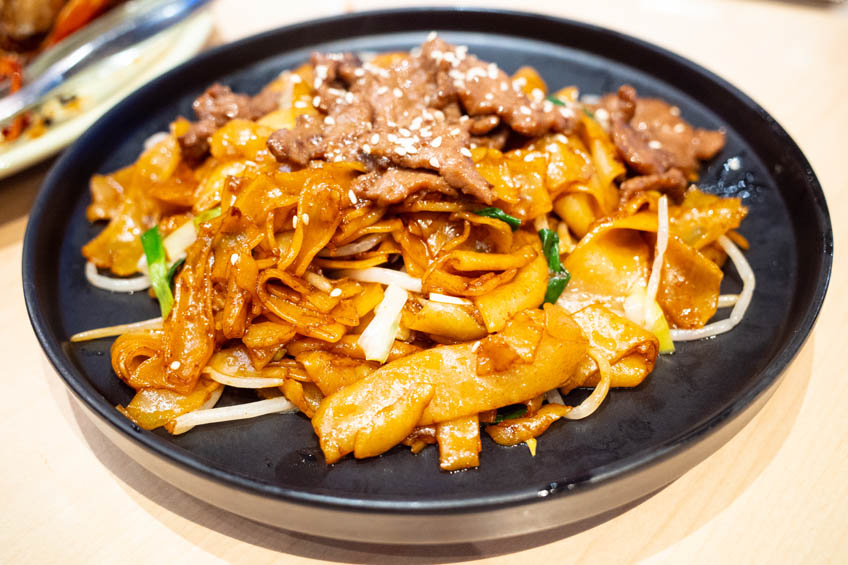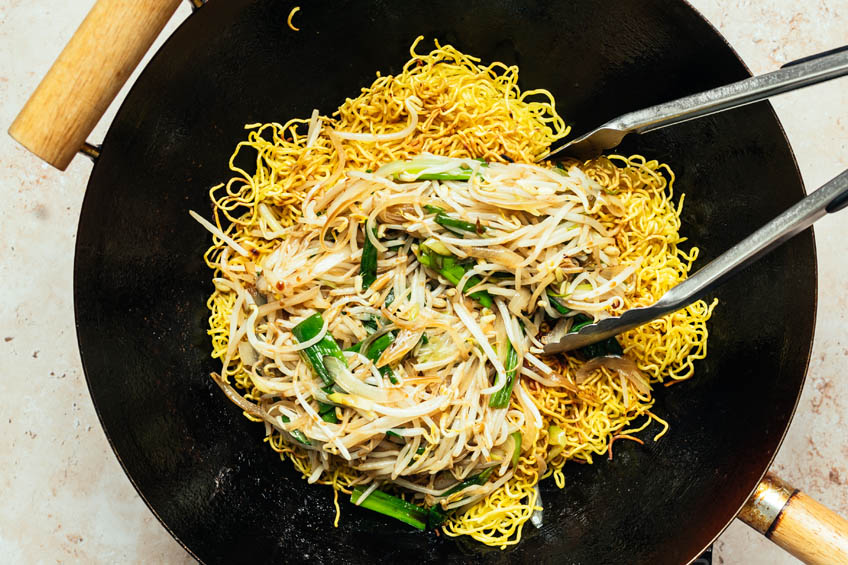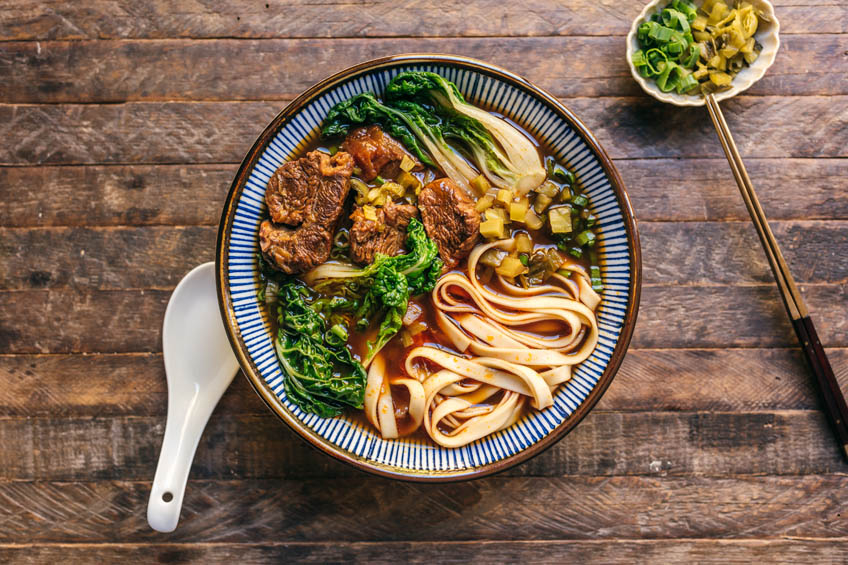
Types of Noodles
Chinese noodles are made from a wide assortment of ingredients, and can contain flavouring and textural additions from lap cheong to scallops. Broadly speaking, the Chinese noodles found throughout North America fall into two major categories: wheat mein—which can be enriched with duck or chicken eggs—and rice based fun (there are many other noodle bases, such as those derived from sweet potato, mung beans and other ingredients).
Noodles can be shaped, shaved, cut, rolled or pulled (watching a noodle maker pull long strands from wheat dough is a truly impressive sight to behold). Generally, noodles come in long strands as a symbol of longevity and often eaten at Chinese Lunar New Year to celebrate this concept.

Pexels
Shopping and Storing
When shopping for Chinese noodles, consider how you want to use them in terms of preparation and texture. Fresh noodles are best used shortly after purchase, especially rice noodles which can lose suppleness over time. Dried noodles have a longer shelf life, although always be careful to check the package to see if they have been pre-boiled or fried, as these methods can alter the staying power and might require refrigeration.
Wheat based varieties of noodles, such as the ones found in bowls of wonton mein soup, plates of crispy fried chow mein or sauced lo mein, come in an assortment of thickness and width. The enriched egg dough version generally needs to be parboiled before being stir or deep-fried or added to soups, and is sometimes dyed a yellow colour. They are sold either fresh or dried in bundles or small single serving nests (or in the case of e-fu mein, sold in larger 8 inch pucks).
Rice noodles are cut from sheets of dough – thick cut ones are rolled around fillings such as beef, shrimp or crispy yaou tieu and served at dim sum as cheung fun. Rice noodles can also be cut into smaller rolled pieces or sliced into flat, wide ribbons. Both of these versions are often sold fresh in Chinese supermarkets, and can be cooked without parboiling. Thinner versions called mei fun (often labelled as vermicelli but not to be confused with the mung bean version) are sold dried, along with their thicker counterparts. Dried versions can require some soaking time before cooking, depending on the size of the noodle.

Get the recipe for Beef Chow Fun Rice Noodles
Cooking
Chinese noodles are truly the adaptable workhorse of the busy cook’s kitchen, and allow you to be one package away from an easy meal. Although some forms of noodles do require a bit of prep in the form of a quick boil or soak, most noodle recipes can be on the table in under 30 minutes.
Frying
Fried noodles take on a crispiness from the heat of the pan, and that level of crunch can depend on how they are served. Thin wheat or egg noodles can be fried to a satisfyingly brittle nest as a base for meat or vegetables in sauce, or shallow fried for a pleasing pliancy. Rice noodles can also be seared over high heat for a bit of wok hei (a char much prized by some diners).

Get Sonia Wong’s recipe for Easy, Crispy Cantonese Chow Mein
Braising or cooking in sauce
E-fu mein or lo mein egg noodles are often served parboiled and braised in a sauce that can range from luxurious lobster to more economical chicken, beef, pork, mushrooms or vegetables.
Boiling or in soup
Although noodles nestled under pillowy wontons (also made with egg dough wrappers) and poached in soup are ubiquitous in many Chinese restaurants across North America, many different noodles are enjoyed this way, often as a snack rather than a meal.

Get Sonia Wong’s recipe for Taiwanese Beef Noodle Soup
*Note: All Chinese names in this article are English phonetic translations of the Cantonese terms and may vary in terms of spelling, depending on the recipe, producer or grocer.
Looking for more tasty Chinese cooking inspiration? Try this simple 15-minute egg drop soup recipe.
